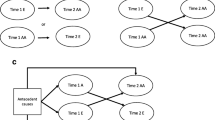Abstract
Objective: Previous research has suggested that child maltreatment is associated with poor school performance. However, previous studies have largely been cross-sectional or, if longitudinal, have had small sample sizes, short follow-up periods, or have not adequately controlled for confounders. The objective of this study is to determine the relationship between child maltreatment and school performance in a cohort of children at risk of maltreatment and followed since birth. Method: This prospective study followed children born at risk for maltreatment with semi-annual reviews of the North Carolina Central Registry of Child Abuse and Neglect. At ages six and eight years, children's teachers were surveyed using the Achenbach Teacher Report Form and project-developed questions regarding peer status. This information, along with control variables from maternal interviews, was used in logistic regression models to determine the impact of maltreatment on academic performance, peer status, and adaptive functioning. The generalized estimating equations (GEE) method was applied to adjust variance estimates for within-person correlations of school performance measures at two points in time. Results: A substantiated maltreatment report is significantly associated with poorer academic performance (p < 0.01) and poorer adaptive functioning (p < 0.001) but not with peer status. Conclusions: Understanding the consequences of maltreatment, including poor academic performance and adaptive functioning, is important in planning educational, health, and social service interventions that may help abused or neglected children succeed in school and later in life. Longitudinal analysis is the best way to establish a causal relationship between maltreatment and subsequent school problems.
Similar content being viewed by others
REFERENCES
U.S. Department of Health and Human Services, National Center on Child Abuse and Neglect. Executive summary of the third national incidence study of child abuse and neglect. Washington, DC: U.S. Government Printing Office, 1996.
Arbuckle BS, MacKinnon CE. A conceptual model of the determinants of children's academic achievement. Child Study Journal, 1988;18:121–147.
Eckenrode J, Laird M, Doris, J. School performance and disciplinary problems among abused and neglected children. Development Psychology, 1993;29:53–62.
Kurtz PD, Gaudin JM, Wodarski JS, Howing PT. Maltreatment and the school-aged child: school performance consequences. Child Abuse & Neglect, 1993;17:581–9.
Leiter J, Johnsen MC. Child maltreatment and school performance. American Journal of Education, 1994;102:154–89.
Salzinger S, Kaplan S, Pelcovitz D, Samit C, Krieger R. Parent and teacher assessment of children's behavior in child maltreating families. Journal of the American Academy of Child Psychiatry, 1984;23:458–64.
Wodarski JS, Kurtz PD, Gaudin JM, Howing PT. Maltreatment and the school-age child: major academic, socioemotional, and adaptive outcomes. Social Work 1990;35:506–13.
Achenbach TM. Manual for the teacher's report form and 1991 profile, Burlington, VT: University of Vermont Department of Psychiatry, 1991.
Kendall-Tackett KA, Eckenrode J. The effects of neglect on academic achievement and disciplinary problems: A developmental perspective. Child Abuse & Neglect, 1996;20:161–169.
Haskett ME, Kistner JA. Social interactions and peer perceptions of young physically abused children. Child Development. 1991;62:979–90.
Salzinger S, Feldman RS, Hammer M, Rosario M. The effects of physical abuse on children's social relationships. Child Development, 1993;64:167–87.
Levendosky AA, Okun A, Parker JG. Depression and maltreatment as predictors of social competence and school problem-solving skills in school-age children. Child Abuse & Neglect, 1995;19:1183–1195.
Allen DM, Tarnowski KJ. Depressive characteristics of physically abused children. Journal of Abnormal Child Psychology, 1989;17:1–11.
Cerezo MA, Frias D. Emotional and cognitive adjustment in abused children. Child Abuse & Neglect, 1994;18:923–932.
Kinard EM. Emotional development in physically abused children. American Journal of Orthopsychiatry, 1980;50:686–696.
Reid JB, Taplin PS, Lorber RA. A social interactional approach to the treatment of abusive families. In R. Stuart (Ed.), Violent behavior: A social learning approach to prediction, management, and treatment. New York: Brunner/Mazel, 1981.
Reidy TJ. The aggressive characteristics of abused and neglected children. Journal of Clinical Psychology, 1977;33:1140–1145.
Kent J. A follow-up study of abused children. Journal of Pediatric Psychology 1976;1:25–31.
Prino CT, Peyrot M. The effect of child physical abuse and neglect on aggressive, withdrawn, and prosocial behavior. Child Abuse & Neglect 1994;18:871–884.
Runyan DK, Curtis PA, Hunter WM, Black MM, Kotch JB, Bangdiwala S, et al. LONGSCAN: A consortium of longitudinal studies of maltreatment and the life course of children. Aggression and Violent Behavior 1998;3:275–285.
Sarason J, Johnson J, Siegal J. Assessing the impact of life changes: development of the life experiences survey. Journal of Consulting and Clinical Psychology 1978;46:932–946.
National Center for Health Statistics, Centers for Disease Control, Public Health Service, U.S. Department of Health and Human Services Questionnaires from the National Health Interview Survey, 1980–1984. PHS 90-1302. Hyattsville, MD: USDHHS, 1994.
Radloff LF. Sex differences in depression: the effects of occupation and marital status. Sex Roles 1977;1:249–265.
Achenbach TM. Manual for the CBCL/4-18 and 1991 Profile. Burlington, VT: University of Vermont, 1991.
Achenbach TM, Edelbrock C, Howell C. Empirically-based assessment of the behavioral/emotional problems of 2-to 3-year old children. Journal of Abnormal Child Psychology 1987;15:629–650.
Dodge K. Teacher's estimation of child's peer status. Nashville, T. N.: Vanderbilt University, unpublished, 1989.
Liang KY, Zeger SL Longitudinal data analysis using generalized linear models. Biometrik 1986;73:13–22.
SAS Institute, Inc. SAS/STAT user's guide. (Vol. 2, Ver. 6). Cary, NC: SAS Institute, Inc, 1990.
Hughes HM. Psychological and behavioral correlates of family violence in child witnesses and victims. American Journal of Orthopsychiatry 1988;58:77–90.
Perez CM, Widom CS. Childhood victimization and longterm intellectual and academic outcomes. Child Abuse & Neglect 1994;18:617–33.
Author information
Authors and Affiliations
Corresponding author
Rights and permissions
About this article
Cite this article
Zolotor, A., Kotch, J., Dufort, V. et al. School Performance in a Longitudinal Cohort of Children at Risk of Maltreatment. Matern Child Health J 3, 19–27 (1999). https://doi.org/10.1023/A:1021858012332
Issue Date:
DOI: https://doi.org/10.1023/A:1021858012332




